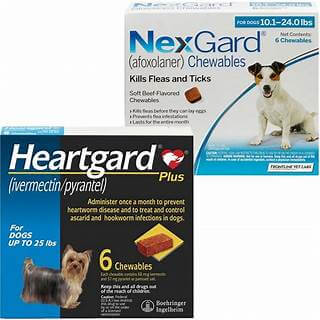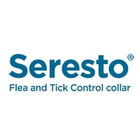Dogs, like humans, are prone to various infections that can affect their skin, ears, eyes, respiratory system, or even internal organs. As a pet parent, recognizing the signs of infection early can make a big difference in your dog’s recovery. This guide will help you understand the most common types of infections in dogs, their causes, symptoms, and effective treatments — so your furry friend stays healthy and happy.
What Are Dog Infections?
An infection occurs when harmful bacteria, viruses, fungi, or parasites invade your dog’s body and start multiplying. The immune system usually fights off these invaders, but sometimes it needs extra help — especially when the infection is severe or recurring.
Infections can occur anywhere, from the skin and ears to the urinary tract or lungs, and can be mild or life-threatening, depending on the cause.
Common Types of Infections in Dogs
a. Skin Infections (Pyoderma)
Skin infections are among the most common in dogs. They often develop due to allergies, parasites, or underlying conditions, such as hormonal imbalances.
Symptoms include:
- Red, itchy, or scaly skin
- Hair loss or bald patches
- Oozing or crusty sores
- Constant licking or scratching
Treatment:
Your veterinarian may recommend medicated shampoos, topical creams, or oral antibiotics, depending on the severity of the condition. Regular flea and tick prevention helps reduce the risk of skin infections.
b. Ear Infections
Dogs with floppy ears or those who swim frequently are prone to ear infections.
Common signs include:
- Head shaking or scratching the ear
- Foul odor from the ear
- Redness, discharge, or swelling
- Whining when you touch their ears
Treatment:
Your vet will clean the ear canal and prescribe ear drops or antibiotics. Keeping ears dry and clean is key to preventing recurrence.
c. Eye Infections
Eye infections can be caused by viruses, bacteria, or foreign objects.
Symptoms include:
- Red or watery eyes
- Discharge or crust around the eyes
- Swollen eyelids
- Squinting or rubbing eyes
Treatment:
Depending on the cause, the vet may prescribe antibiotic eye drops or ointments. Avoid using human eye drops unless directed to do so by a veterinarian.
d. Urinary Tract Infections (UTIs)
UTIs are common in female dogs and can lead to serious kidney problems if left untreated.
Symptoms include:
- Frequent urination or straining
- Blood in urine
- Accidents inside the house
- Licking the genital area excessively
Treatment:
Your vet may recommend urine tests to confirm infection. Antibiotics, increased water intake, and a balanced diet can help prevent future UTIs.
e. Respiratory Infections
Coughing, sneezing, and nasal discharge may indicate a respiratory infection such as canine influenza or kennel cough
Symptoms include:
- Persistent coughing
- Nasal discharge or congestion
- Loss of appetite
- Lethargy
Treatment:
Mild cases often resolve with rest and hydration. In some severe cases, your vet may prescribe antibiotics or antiviral drugs to control the infection. Vaccinations for kennel cough and influenza can prevent future infections.
f. Parasitic and Fungal Infections
Parasites, such as fleas, ticks, and mites, as well as fungi like ringworm, can cause skin irritation and infection.
Symptoms include:
- Itching or bald patches
- Circular scaly lesions (in ringworm)
- Visible parasites or flea dirt
Treatment:
Your vet may prescribe antifungal creams, oral medication, or monthly preventives like Simparica Trio or Revolution to protect against multiple parasites.
How to Prevent Infections in Dogs
Prevention is always better than a cure. By providing the right care and attention, you can greatly reduce your dog’s chances of getting infections.
Here are simple steps to follow:
- Maintain hygiene: Regular baths using gentle, vet-approved shampoos help keep the skin clean.
- Use parasite preventives: Monthly flea and tick control is essential.
- Clean your ears and eyes regularly, especially if you have a breed prone to infections.
- Feed a balanced diet: A nutritious diet supports a strong immune system.
- Vaccinate your dog: Follow your vet’s recommended vaccination schedule.
- Keep their environment clean: Regularly wash bedding, toys, and bowls.
When to See a Vet
It’s crucial to contact your vet if your dog shows any of these signs:
- Persistent itching or scratching
- Foul odor from the mouth, ears, or skin
- Redness, swelling, or oozing discharge
- Loss of appetite or energy
- Fever or behavioral changes
Delaying treatment can allow infections to spread and lead to serious complications.
Treatment and Recovery
The treatment approach depends on what’s causing the infection and where it occurs in your dog’s body.
- Bacterial infections: Antibiotics or medicated shampoos.
- Viral infections: Supportive care and rest until the virus runs its course.
- Fungal infections: Antifungal creams or oral treatments.
- Parasitic infections: Preventive treatments like Simparica Trio, NexGard, or Bravecto.
Follow your vet’s advice closely and complete the prescribed course of medication even if your dog seems better early.
Supporting Your Dog’s Immune Health
A healthy skin and a strong immune system can reduce the risk of infection. Add Omega-3 fatty acids, probiotics, and high-quality protein to your dog’s diet.
Ensure they receive sufficient exercise, hydration, and regular veterinary check-ups to maintain their overall health.
Final Thoughts
Infections in dogs can vary from mild irritations to severe health conditions. Early detection, proper hygiene, and regular vet care are key to keeping your pet healthy.
Whether it’s a skin rash, ear infection, or parasite issue, timely treatment ensures faster recovery and lasting comfort for your furry friend.
For ongoing protection, consider trusted preventives like Simparica Trio, NexGard, or Revolution, available at 79Pets.com — where you can find the lowest prices on pet medications in the US with fast shipping.







